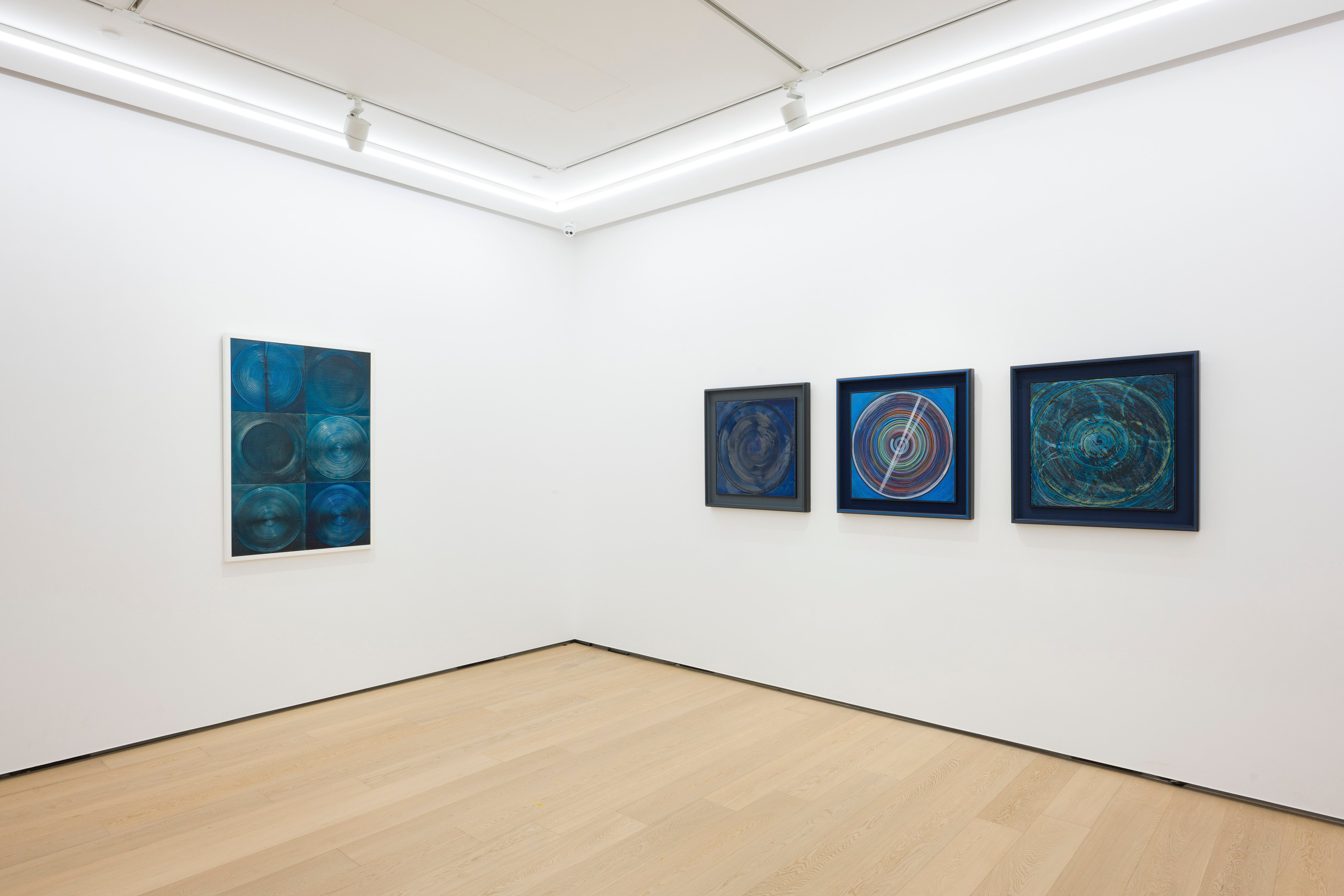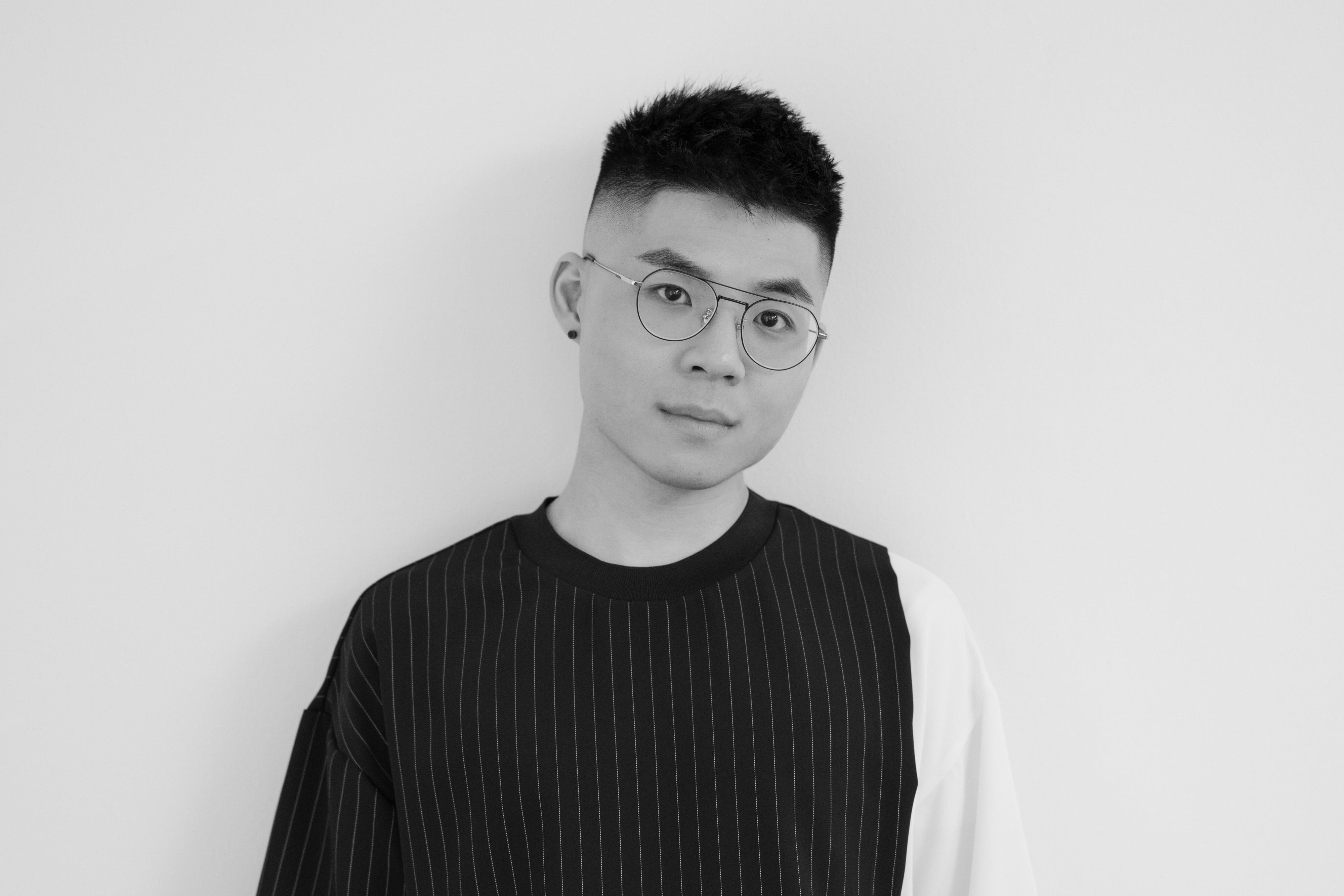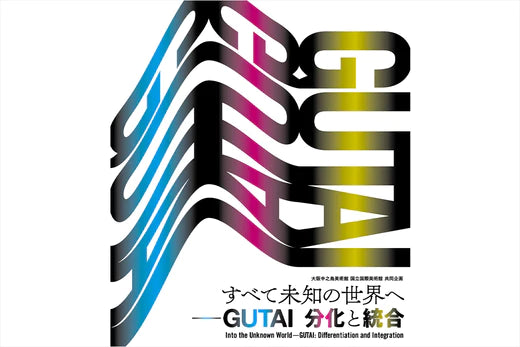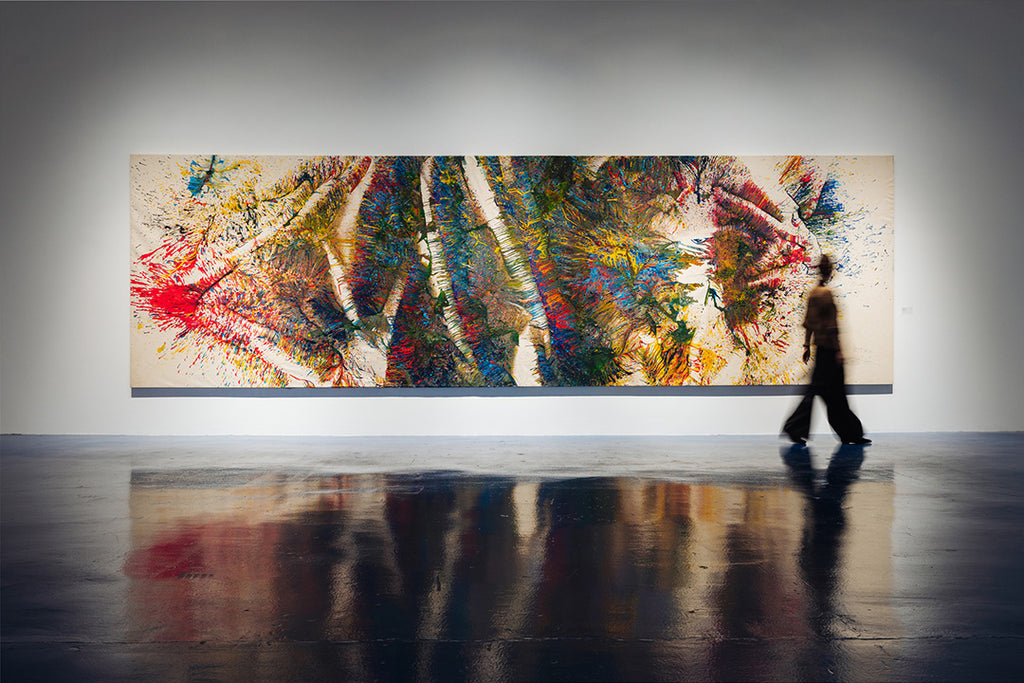ARTICLES
When Informel Meets Gutai: A voyage of Japanese Post-war and Contemporary Art | Review by Cusson Cheng
2022.08.19
香港

Whitestone Gallery Hong Kong are currently holding the group exhibition, "Whirlwind: Informel to Gutai" featuring leading postwar Japanese artists Toshimitsu Imai, Hisao Domoto, Atsuko Tanaka, Yuko Nasaka. On July 23, Cusson Cheng, curator and art critic, gave a guided tour of the exhibition. This article introduces Cusson Cheng's review of the exhibition.
When Informel Meets Gutai: A voyage of Japanese Post-war and Contemporary Art | Review
Cusson Cheng
This summer, Whitestone Gallery Hong Kong presents Whirlwind: Informel to Gutai, a group exhibition that features significant names in the trajectory of Japanese post-war and contemporary art, including Toshimitsu Imai, Hisao Domoto, Atsuko Tanaka, and Yuko Nasaka. Throughout the years, the gallery has been showcasing museum-quality works by Gutai and post-war artists, demonstrating how they resist artistic constrictions, celebrate experimental and avant-garde approaches, and turn a new page in the history of Japanese art.
After experiencing the horrific and painful traumas that were brought by the Second World War, the European art scene realised there was an urgency to seek a brand-new visual language and vocabulary that was infused with spontaneity and freedom to express newfound realities of contemporary experience in a post-Holocaust era. To defy art genres that involved rigid control and rationality, such as geometric abstraction and cubism, artists like Georges Mathieu, Willem de Kooning, Jean Dubuffet, Hans Hartung, and Pierre Soulages developed a swathe of approaches to abstract paintings that consisted of improvisatory methodology and highly gestural technique, which was coined as ‘Art Informel’ by French critic Michel Tapié in his 1952 book Un Art Autre.

From the guided tour.
Artists active in this movement were not limited to Europe, Toshimitsu Imai and Hisao Domoto, who at that time were living in France, were the Japanese members of the art group. In 1952, Imai travelled alone in Paris despite Europe still recovering from the post-war turmoil. After getting involved in the Art Informel movement, he temporarily returned to Japan in 1957 and introduced the art form to his fellow artist friends and critics, which started a crucial whirlwind in the Japanese art scene that sparked new conversations on aesthetics and informal creative process. Rather than simply imitating works created by his Western counterparts, Imai broke through European stereotypes by incorporating traditional Japanese sensibilities and aesthetics in his practice.
The viewer will be mesmerised by Imai’s three powerful and energetic paintings when walking into Whitestone Gallery Hong Kong’s space. Showcasing on the centre wall is Composition (1963), a signature piece that encapsulates the essence of Imai’s practice. One will be enthralled by the distinctive contrast of colours created by juxtaposing the dynamic red palette against the sombre black background. The use of organic colours and explosive brushwork evokes imageries of blooming flowers or the transient moment when a butterfly flutters its wings. Although the work has an ardent composition, Imai did not necessarily allow the energy to overflow or triumph over rationality, rather, he skillfully carved the paint and added a sculptural quality to the work. Opposite the large canvas works are smaller paintings for connoisseurs.

From the exhibition view, Toshimitsu Imai, Composition, 1963, Panel, Canvas, Oil painting, 200.0 × 150.0cm
In Soleil (1963), Imai first painted the base using a dazzling, lush gold hue and employed a deep red palette to create the composition of the sun. To highlight the dynamic of solar energy, the artist used dense, heavy black oil paint to create beautiful impastos and vivid splashes across the canvas. Imai’s calligraphic mode of expression that stems from his Japanese heritage enables his works to radiate fervid and striking artistry.

From the exhibition view, Toshimitsu Imai, Soleil, 1963, Panel, Canvas, Oil painting, 76.0 × 94.0cm
Viewers will then be captivated by Hisao Domoto’s paintings when they walk further into the gallery space. Alike his friend and fellow artist Toshimitsu Imai, Domoto who was living in Paris at the time created signature paintings that consisted of thick layers of oil paint and vibrant swirling, allowing him to earn the title of one of the leading artists of the Art Informel movement. Compared to Imai’s works in the group exhibition, most of Domoto’s works in swirling style on display primarily employ cooler bluish-green tones to depict lively nature.

From the exhibition view.
Looking from afar, Untitled (1956) may be reminiscent of Chinese-French master Zao Wou-ki’s Hurricane series; Domoto used various viridescent and pearl-grey shades to visualise how gusts of wind pass through the emerald green fields and hills with generous and lush brushstrokes. On the left side of the canvas, the artist also applied thick paint blended with hints of dark red, pink, yellow, and black to transform zephyr into qi, crystallising the circulating life force and energy flow in front of one’s eyes.

From the exhibition view, Hisao Domoto, Untitled, 1956, Canvas, Oil painting, 53.8 × 81.0cm
In ESPACE B (1956-57), despite being created the same year as Untitled, Domoto took the opportunity to explore an exceptional approach, rather than similarly swirling impasto on the canvas to create natural landscapes. The artist masterfully employed the cream, ivory white palette to create a great deal of negative space. Domoto’s decision to include the element of emptiness transforms the painting into a world that is a void yet filled with elegance, where he utilised diluted oil paint in pastel rose and sky-blue colours to recreate dreamy and mystical glaciers and icescapes, compelling the viewers to see natural sceneries afresh. Domoto also delicately painted over the glacial landscapes with spirited, black gestural brushstrokes to balance the lightweight of the paler tones. The organic combination of strokes, lines, and dots echoes with the composition and technique that one may find in traditional Eastern calligraphy.

From the exhibition view, Hisao Domoto, ESPACE B, 1956-57, Canvas, Oil painting, 114.0 × 146.0cm
Like Art Informel, Gutai also emerged in the period after the Second World War. Founded in 1954, Gutai Art Association is the first radical, post-war artistic group in Japan that aims to develop new modes of expression that not only go beyond abstraction but pursue zealously the possibilities of freedom of expression and creativity in a post-nuclear and militarist age. The word gutai can be interpreted in several ways. On one hand, it means ‘concreteness’, in Gutai art, the process is just as important as the finished work, in which artists directly engage with raw materials through intentional and significant physical action. On the other hand, ‘gu’ may refer to tools or a way of doing something, and ‘tai’ means a body. Just as what Japanese artist Jiro Yoshihara wrote in Gutai Art Manifesto in 1956, ‘...[T]he human spirit and matter shake hands with each other while keeping their distance”1 , meaning that Gutai art encapsulates the interaction between the human with matter while allowing the latter to maintain its natural characteristics.
Such hallmarks of Gutai art can be found in female members Atsuko Tanaka and Yuko Nasaka’s eye-catching works in the adjacent exhibition space and the gallery’s lower floor, particularly from their masterful use of technology and cutting-edge industrial materials.

From the exhibition view.
Using synthetic resin enamel and permanent markers, Tanaka’s paintings entrance the viewers with vivid colours and glossy matiéres. In 2001G (TO1112) (2001), the artist painted recurrent motifs such as circular forms and lines to depict light bulbs and electric circuitry. Although only using two simple geometric forms, the complex composition and structure make it impossible for the viewer to trace the origin. Such artistic style resonates with the Buddhist concept ‘Dependent Origination’ (Pratītyasamutpāda), which unfolds that every worldly phenomenon is conditioned and impermanent; in other words, it teaches a form of causality that is based on interdependence. Similarly, Tanaka’s work presents an electrifying universe of harmonious, balanced, and interconnected circular lights to guide the viewers to comprehend and navigate a world full of chaos and dissonance.

From the exhibition view, Atsuko Tanaka, 2001G (TO1112), 2001, Panel, Canvas, Synthetic Resin Enamel Paint, 97.0 × 130.0㎝
Joined Gutai Art Association in 1963, Yuko Nasaka has been creating original and experimental board panel works made of brightly hued car lacquer, plaster, glue, and clay. Nasaka’s creative process not only is partially inspired by her family’s factory of industrial tools such as circular metres used in ships, but her board panel paintings also embody traditions of Zen Buddhism.

From the exhibition view.
In the six-board panel works Untitled 537-2 (1962) and Untitled NY-93 (2016), Nasaka coated the square wooden boards with a thin layer of glue, plaster, and clay; she then placed each panel on a custom-made mechanical turntable that was invented based on a potter’s wheel. When the panel started to rotate, she employed a palette knife to sculpt organic patterns into the mixed media. Finally, she used an airbrush to paint each panel in turquoise or indigo-colour resin and lacquer, presenting an elegant illusion as if they were glazed like ceramics. Together the board panels present an overwhelming, infinite repetition of mysterious circles, creating a transcending and religious experience that puts the viewers into a trance.

From the exhibition view, (Left) Yuko Naska, Untitled NY-93, 2016, Mixed media on board, 135.0 × 90.0cm, (Right) Yuko Naska, Untitled 537-2, 1962, Lacquer, resin, Mixed media on board, 120.3 × 80.0cm
Showcasing expressive Art Informel paintings by Toshimitsu Imai and Hisao Domoto, as well as pioneering Gutai works by Atsuko Tanaka and Yuko Nasaka, Whirlwind: Informel to Gutai at Whitestone Gallery Hong Kong is a voyage that captures the essence of Japanese post-war and contemporary art, enrapturing the viewers to delve into an artistic world of gestural brushstrokes, bold use of palettes, innovative use of mediums, and boundless freedom of expression.

Whitestone Gallery Hong Kong
"Whirlwind: Informel to Gutai" online exhibition offers a glimpse of the guided tour in action. Click here for a detailed description of the guided tour.

Cusson Cheng
Cusson Cheng is a curator and art critic from Hong Kong. He has been Assistant Curator at Para Site since January 2021, where he has worked on exhibitions including Curtain (2021), Liquid Ground (2021), Noble Rot (2021–2022), and Minding the G(r)a(s)p (2022). He was invited by Galerie du Monde to curate 'Retrograde' (2022), a group exhibition on queer and sexual politics. He is also currently organising his first major exhibition at Para Site, which will open in late 2022. He was one of the candidates for the 2019 Para Site International Conference & Workshops for Emerging Professionals. In addition to his curatorial work, Cheng serves as Art Editor at the Hong Kong-based leading Chinese-language art periodical Art and Piece (美紙). He has interviewed internationally renowned artists, including Marina Abramović, Pipilotti Rist, Daniel Arsham, Nicolas Party, and Genieve Figgis. He is frequently invited by galleries and organisations to write exhibition reviews, including Korean artist Lee Bae's solo presentation at Perrotin, Hong Kong. Cheng received his BA with Honours in comparative literature, sociology, and Buddhist studies from the University of Hong Kong.
1: Yoshihara Jiro, “Gutai Art Manifesto,” trans. Reiko Tomii, in Gutai, Munroe and Tiampo, eds., p. 18. Originally published as “Gutai bijutsu sengen,” Geijutsu Shincho 7, no. 12 (Dec. 1956), pp. 202–04.



